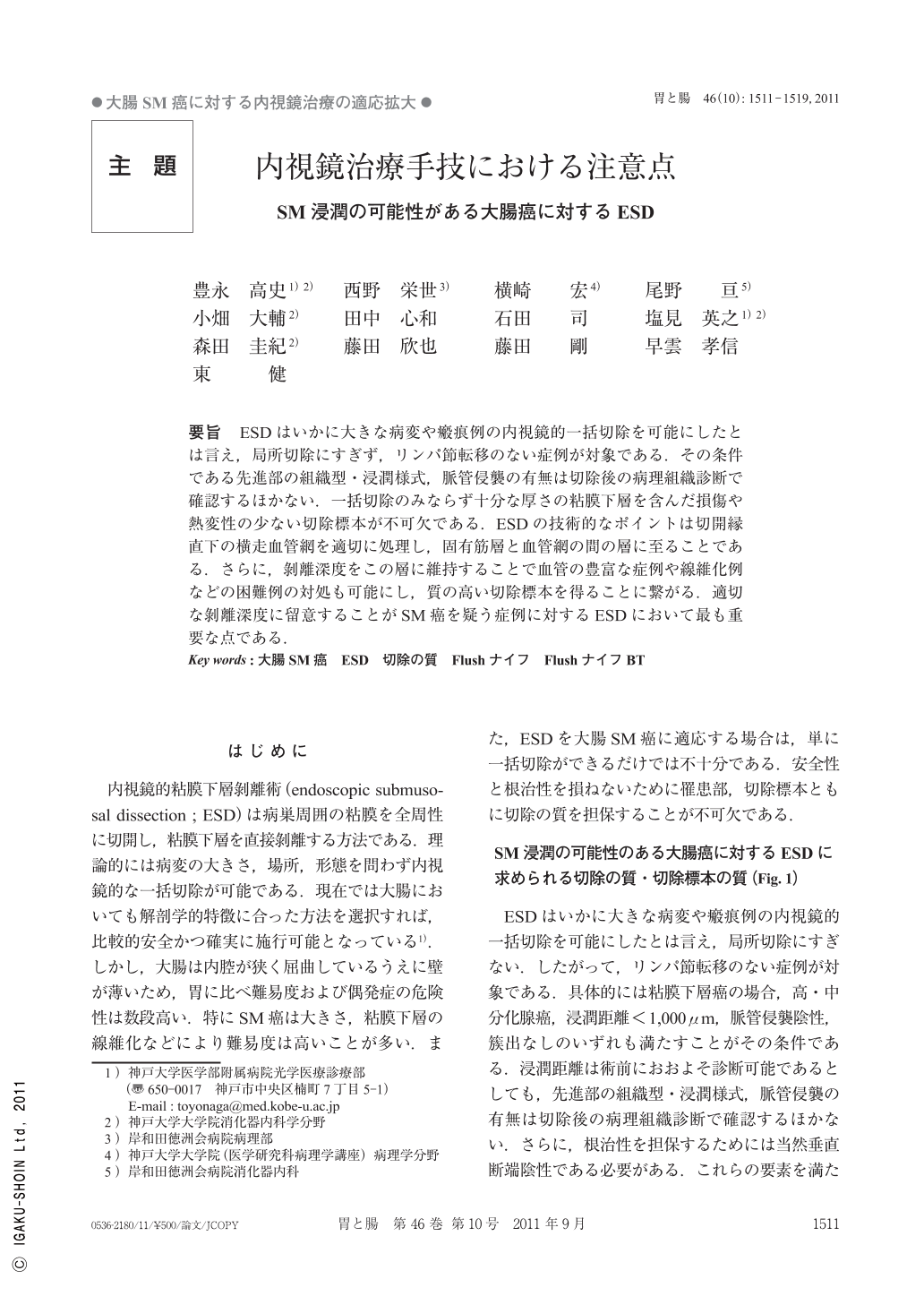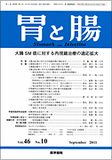Japanese
English
- 有料閲覧
- Abstract 文献概要
- 1ページ目 Look Inside
- 参考文献 Reference
- サイト内被引用 Cited by
要旨 ESDはいかに大きな病変や瘢痕例の内視鏡的一括切除を可能にしたとは言え,局所切除にすぎず,リンパ節転移のない症例が対象である.その条件である先進部の組織型・浸潤様式,脈管侵襲の有無は切除後の病理組織診断で確認するほかない.一括切除のみならず十分な厚さの粘膜下層を含んだ損傷や熱変性の少ない切除標本が不可欠である.ESDの技術的なポイントは切開縁直下の横走血管網を適切に処理し,固有筋層と血管網の間の層に至ることである.さらに,剝離深度をこの層に維持することで血管の豊富な症例や線維化例などの困難例の対処も可能にし,質の高い切除標本を得ることに繋がる.適切な剝離深度に留意することがSM癌を疑う症例に対するESDにおいて最も重要な点である.
ESD(endoscopic submucosal dissection)enables en block resection of the lesions regardless of size and location. However, it still remains a local resection. Endoscopist should assess in detail histopathological findings such as the differential type, the depth of invasion and lymph-vascular invasion of the lesion using a high quality resected specimen. The vasculature responsible for difficulty in ESD and the quality of the specimen is the ramified vascular network occupying the middle of the submucosal layer and large vessels penetrating the muscle layer. The trimming of the ramified vascular network can be safely performed using the coagulation mode following shallow mucosal incision. Large penetrating vessels usually require precoagulation prior to dissection. Appropriate management of these vessels must be addressed. These procedures are effectively performed with the Flush knife and Flush knife BT. The appropriate level of dissection is extremely important for both a safe and simple procedure and a high quality resection suitable for precise pathological assessment.

Copyright © 2011, Igaku-Shoin Ltd. All rights reserved.


